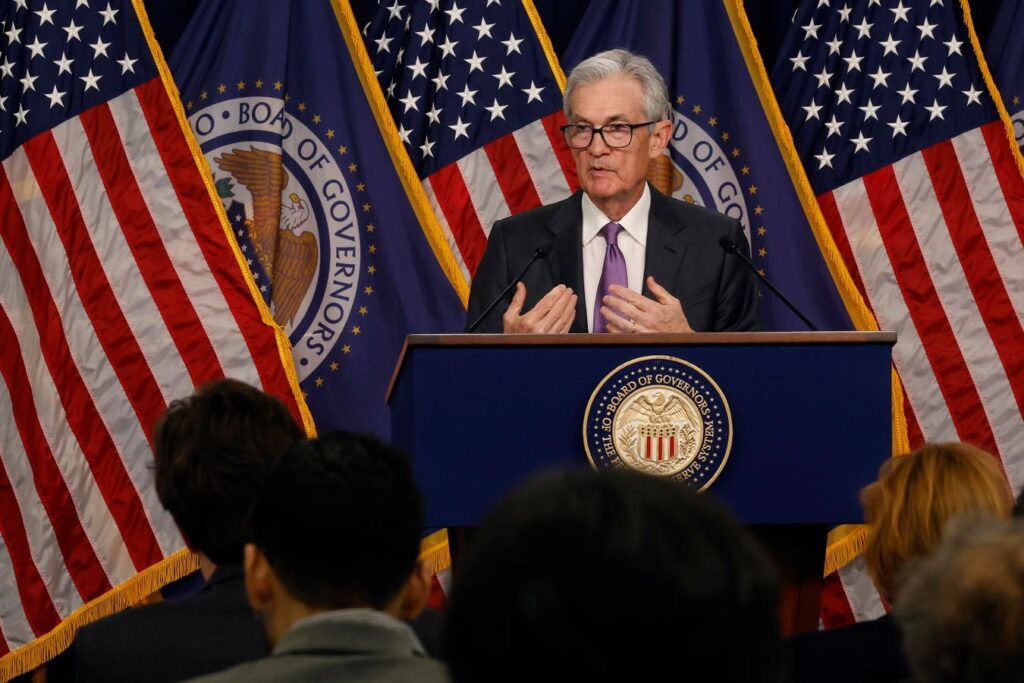On March 20, 2024, Federal Reserve Bank Chair Jerome Powell addressed the media following a meeting of the Federal Open Markets Committee (FOMC) in Washington, DC. During his remarks, Powell revealed that the Fed had decided to maintain interest rates around 5.3 percent, despite speculations surrounding future adjustments. He suggested, however, that the Fed could potentially implement three rate cuts later in the year as inflation trends downward. This statement aligns with market expectations, with predictions indicating that the Fed is likely to lower rates to between 4.25 percent and 4.5 percent during their December meeting, bolstered by recent economic indicators suggesting a softening jobs market and subdued inflation levels.
Recent actions by the FOMC included rate cuts in both September and November after a lengthy period of peak interest rates. The sentiment among policymakers indicates a growing belief that further rate cuts will occur in the next year, although the exact pace remains contingent on future economic data. The ongoing concern about inflation levels staying above the FOMC’s two percent target is a crucial factor that might hinder the adoption of looser monetary policy. Still, officials seem to be taking a broader view of disinflation rather than overreacting to individual data points, indicating a cautious but optimistic outlook.
In his speech on December 2, Fed Governor Christopher Waller acknowledged the risk of inflation stagnating at a higher level than desired, prompting the FOMC to potentially hold the policy rate steady to gather more data. He expressed a personal leaning towards supporting a rate cut in December, contingent upon upcoming data. His comments were echoed by Fed Governor Andrea Kugler, who emphasized a balanced approach towards the Fed’s dual mandate of maximum employment and price stability. Kugler mentioned that recent economic developments, including a continuing trend of disinflation and moderation in the job market, justified recent rate cuts and indicated a move towards a more neutral monetary policy stance.
The rationale for adjusting interest rates has its roots in the significant inflation spike to nearly 9% in the summer of 2022, prompting aggressive monetary policy responses. Consequently, with inflation cooling, the FOMC is now looking to reverse prior restrictive measures. This backdrop fuels speculation that a December rate cut is not only likely but may also pave the way for additional cuts in the coming year, depending on the directions of inflation and labor market data.
Looking ahead to 2025, the trajectory of interest rate cuts remains uncertain and will depend largely on the persistence of inflation and the health of the job market. The committee must also consider the potential for negative economic indicators that could impact their decision-making process. For instance, an unexpected rise in inflation could delay the timing of rate cuts, while indications of a weakening labor market could lead to more substantial reductions in interest rates. Nevertheless, as of now, the prevailing sentiment suggests that the risks impacting the December meeting are relatively low, making a single rate cut the most probable outcome.
In summary, the Federal Reserve’s current posture reflects a cautious optimism in the face of softening inflation and labor market conditions. The upcoming FOMC meetings will be pivotal in shaping the course of monetary policy, as officials remain vigilant to incoming economic data. The balance of employment and price stability remains the central focus, with future decisions likely influenced by the dynamic interplay between inflation trends and labor market developments. The path the Fed takes will not only signal its immediate response to current economic conditions but also lay the groundwork for its longer-term monetary policy strategy.

